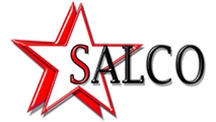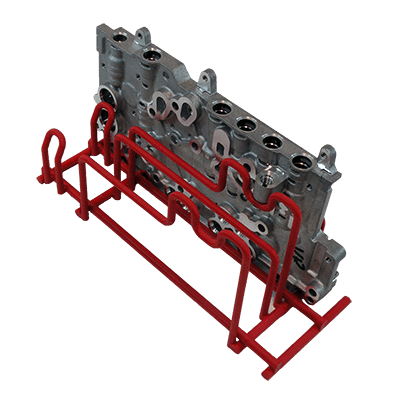Alongside custom wire formations and material handling manufacturing, Salco Engineering & Mfg., Inc. has been making strides in the unique world of 3D printing. In late 2012, Salco purchased a Stratasys 3D printing machine and it has been in steady use ever since.
To request a quote for 3D printing services, click here.
Stratasys is a leading company in the world of 3D printing. They have headquarters in Minnesota and Israel, as well as manufacturing sites across the states and throughout Asia, Europe, India and Australia. Salco purchases their remaining printer materials and maintenance packages from Fisher Unitech. Fisher is a direct distributor for Stratasys and focuses sales and service on the Midwest states.
Salco owns a Stratasys Dimensions sst1200es model, which utilizes a special thermoplastic material to create custom parts. These parts are used to help visualize projects before being manufactured as wire. Often times, the 3D model will give a better perspective on ergonomic specifications and material handling capabilities when coupled with the basket in which it will eventually belong.
“It’s not unusual for a customer to tell us what they need their basket to hold or do, but they don’t have a physical part for us to work that out with. Developing the missing part on the Stratasys helps bring everything to life,” said Dave Lewis, CAD Designer for Salco since 2011.
Lewis uses Solidworks to design the 3D part. Once it’s complete, the file is saved using a program called Catalyst, which is recognized by the printer. It accepts the file and begins production thereafter. The printer uses an ABSplus Thermoplastic with thickness ranging from 0.254mm to 0.33mm to create the actual product. The plastic is heated into a semi-liquid and then extruded into thin, accurate layers. The thermoplastic is available in 9 different colors; red, blue, olive green, tangerine, white, ivory, black, grey and yellow. Although the printing is not especially quick, it is extremely helpful in the overall production process.
The printer uses two materials to complete the product. The ABSplus thermoplastic creates the defined part, and a compilation of soluble materials make up the support structure. At the end the 8-12 hour print cycle, the part is placed into a basic solution and allowed to set overnight. The solution dissolves the support material but does not adversely affect the thermoplastic. The end product matches the Solidworks design and is ready to use or ship immediately.
“We can start a run before we leave for the night, and so long as it’s not a giant part, it’s typically done by the morning,” noted Lewis.
In the recent past, Salco has started using the Stratasys more than ever. Not only is the company creating prototyping for wire production runs, they are now producing 3D parts as the production run. Since the start of 2016, the printer has pumped out close to 2 dozen custom projects for another local-to-Michigan company. These custom pieces have varied from low density wash trays to unique part placement designs.
“It’s really amazing what this printer can do. It has added a whole new dimension to what Salco, as a manufacturing company, does,” stated Jim Flack, Salco President.
3D printing is becoming ever popular across the manufacturing industry and elsewhere. Other industries that utilize the capabilities of 3D printing are aerospace, medical and dental, entertainment, and commercial and consumer products industries.
For photos and more examples about completed 3D printing projects, click here.



